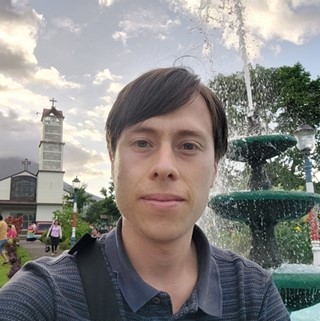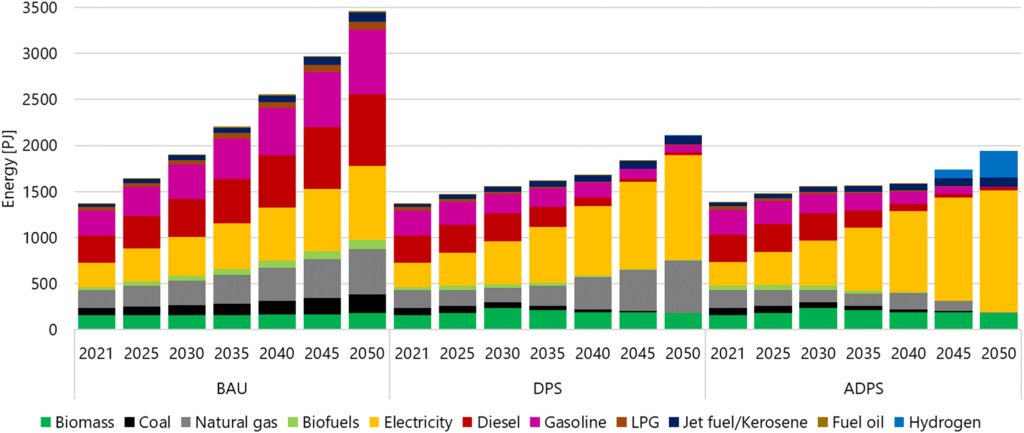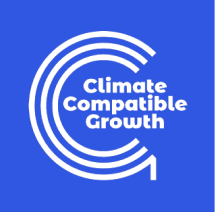Fernando Plazas Nino discusses the paper: “Informing sustainable energy policy in developing countries: An assessment of decarbonization pathways in Colombia using open energy system optimization modelling” which he wrote with CCG colleagues R. Yeganyan, C. Cannone, M. Howells and J. Quirós-Tortós. It was published in ScienceDirect Volume 50.

Tell us about the origin of the paper
Essentially, in this paper the idea was to create the first OSeMOSYS model for Colombia, because at that time the main model used for energy planning was based on the LEAP (Low Emissions Analysis Platform) software which is not an optimization tool but a simulation model. LEAP is a commercial model and not open-source, so one of the main advantages we achieved during the work was to provide the first version of a totally open-source model for Colombia with all the open data and open-source code for making additional developments based on that initial model. So that was a major contribution from this work. For CCG, Colombia is a demonstrator country rather than a partner country, but we have of course shared the learning we acquired here across all of our partner countries.

Great – that’s very significant because of course that saves money for the user and enables them to benefit from all the shared expertise of the open-source community.
Yes. The second benefit of our project was that we deliberately aimed to create an optimised view of Colombia’s future energy plans rather than a purely commercial one or a business-as-usual one. Our paradigm included socioeconomic factors in what we call our externality evaluation. So, we looked at how every unit of emission would affect public health in terms of local pollution, for example. We looked at the impact on the health system (because that’s a cost for the Government too) and other areas of concern to communities.
I understand.
The final benefit was that we included different technologies that were not considered in previous scenario work like biomass, Carbon Capture and Storage, and hydrogen technologies. This obviously provided a wider view of the different possibilities we could have for decarbonising the energy system in Colombia.
I see, much more comprehensive. Tell us more about the detail of your approach for this project.
We had one set of essential or input data, the OSeMOSYS tool, and we proposed three scenarios. The first was the business-as-usual scenario; continuing with fossil fuels technologies as the status quo. In Colombia, around 75% of our system is supplied by fossil fuels – we have reserves of natural gas, coal and oil – and they are of course pollutants.
Then we had the full decarbonization scenario which was where we activate all the different possibilities, and we set an emission reduction target to reach – carbon neutrality by 2050.
Finally, the third scenario was full decarbonization but without CCS technologies being active as we weren’t sure that they would be mature enough by then. One of the conclusions for this scenario was that, if CCS technologies are not available, we cannot reach the target of carbon neutrality.
So, we compared all three scenario results in terms of emissions, in terms of installed capacities, and energy production in different sectors. Another difference to previous LEAP projects was that we did a whole energy system analysis, so not just the power sector but also a residential sector, commercial and public services sector, industrial sector and transport sector. It was, let’s say, a macro energy system assessment comparing the behaviour and interlinkages in the different sectors to analyse their impacts.
We also did a cost-benefit analysis, including some externalities trying to evaluate the impacts in terms of local pollution, global warming effects and also carbon taxes. This provided another important conclusion which was that if we go with any of the different decarbonisation scenarios, we will have a net benefit. The global warming factor we included had costs associated with assistance expenses for families when they lose their homes to flooding or fires, and the restoration of ecosystem loss.
In the end, our project proved that it’s a much better option to work towards decarbonisation than continue with fossil fuel development.

It sounds like this really was very significant as a first in Colombia, Fernando, a pioneering piece of work which changed the dynamic in terms of looking at the future. Congratulations.
Thanks. We’re hoping that this will be adopted within the energy planning teams in the Government and we would, of course, be delighted to support them if that happens. It also seems that open-source is gaining more attention in Colombia too, for energy planning activities.
That’s great news. Did you have any participation from Government ministries during the project?
Unfortunately not, but we did reach out to them with our results.
In terms of the real-world implications of this work, it sounds like you’ve provided a much more accurate, much more nuanced set of information and scenarios for the policymakers to use, as well as demonstrating the value of OSeMOSYS as a freely available, open-source tool.
Yes. I feel that the methodology that I applied was the main benefit and now I understand that the national agencies are trying to incorporate open-source tools in their modelling work.
What would you like to happen next with the work that you have done?
I think that there would be many interesting results if this approach could be applied to different areas, and I would really like to see other data owners getting involved to add their perspectives and enrich the picture of the real-world implications of the three scenarios.
Will you continue to work on this theme?
The idea is that the next step would be to develop a CLEWs (Climate Land Energy Water) model for Colombia. And I’m hoping to start my PhD with CCG’s Jairo Quiros-Tortos to try to evaluate how Colombia can move from being a net exporter of crude oil and coal, to using clean energy instead.
Thank you so much for talking to us
You can read the full paper here.
This material has been produced under the Climate Compatible Growth (CCG) programme, which is led out of the STEER centre, Loughborough University. CCG is funded by UK aid from the UK government. However, the views expressed herein do not necessarily reflect the UK government’s official policies. This work was developed with the Energy Transition Council (ETC), which assisted in identifying needed research areas and connected to relevant stakeholders for a discussion on essential aspects of research.
